What is Applied Behavior Analysis?
Applied Behavior Analysis (ABA) Therapy consists of systematic, goal-oriented exercises designed to increase the likelihood of typical behavior and decrease the likelihood of repetitive, restrictive and other detrimental behaviors. In ABA therapy, a child works one-on-one with a teacher to achieve individual goals. The ABA therapist tracks the child’s progress, modifying goals accordingly. Most therapists tailor an ABA plan to each child and, based on a particular child’s needs and level of development, may add exercises such as Discrete Trial Training, Pivotal Response Training, Functional Communication Training and Applied Verbal Behavior. ABA-based therapies have the largest body of research demonstrating significant improvements in behavior for children on the autism spectrum.
-
Teaching Lucas Eye Contact 2

While playing games with his therapist Georgia, Lucas cannot maintain eye contact during the social interaction and often avoids Georgia's attempts to make eye contact by looking or turning away. This is an excellent example of the fleeting or unusual eye contact that may be an early indicator of autism.
-
Lucas' Eating Issues

Many children on the spectrum may suffer from gastrointestinal problems or exhibit an extreme, often unexplained aversion to many foods. As a result, their diets may be very limited. There are only a few foods that Lucas can be coaxed to eat, and sometimes getting Lucas to eat even one of these preferred foods can be a challenge. Georgia, Lucas' therapist, tries to help Lucas and his mother at lunch time.
-
Teaching Lucas Receptive Language Skills
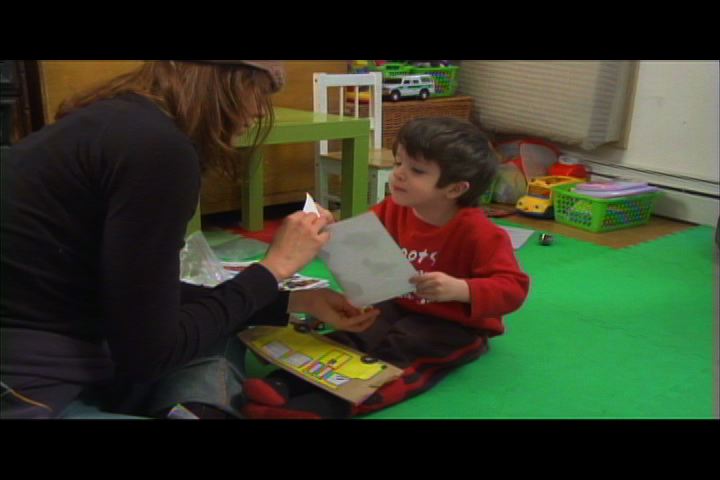
Georgia, a therapist, is shown working on expressive and receptive language skills with Lucas in his home. Using songs and pictures, Georgia encourages Lucas to pick out animals according to the sounds they make (receptive language), imitate those sounds (expressive language) and name each animal (expressive language). Lucas demonstrates his receptive vocabulary by correctly selecting the duck out of a variety of other animals according to Georgia's purely verbal request: "Which animal says quack?"
-
Lack of Spontaneous Imitation

Though imitation plays a critical role in children's aquisition and honing of new skills, children on the autism spectrum often struggle to imitate others both spontaneously and within the more structured and rewarding environment of a therapy session. Dr Christopher Smith comments.
-
Therapy for Improving Eye Contact

Dr. Smith discusses the benefits and limitations of therapeutic interventions designed to improve eye contact in children with autism.
-
Teaching Lucas His Anatomy
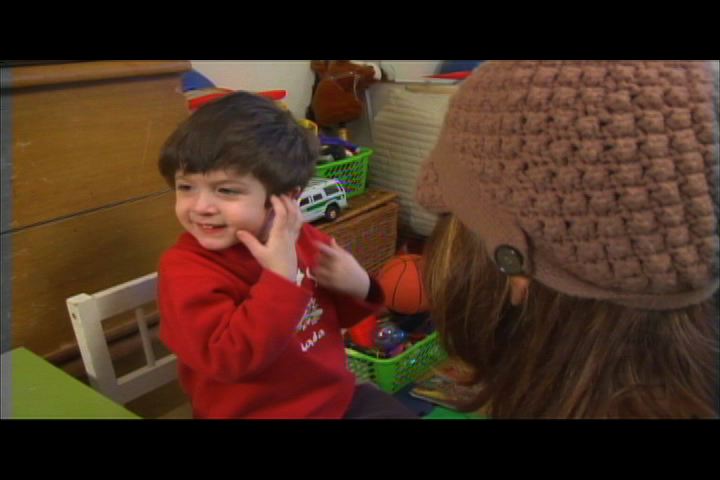
In this clip, the therapist, Georgia, practices receptive language skills with Lucas by asking him to point to different parts of his body. The therapy seems to be working, increasing Lucas's receptive vocabulary he does a great job with only a few cues and corrections from Georgia.
-
Working with Therapist on Eye Contact and Speech

The following clip shows a behavioral therapist encouraging Leighdionne, a young girl with ASD, to make eye contact and imitate. The therapist employs multiple methods including voice, touch and the use of food to direct Leighdionne's attention to her face, praising her immediately when she makes even brief eye contact. Like many children with autism, Leighdionne appears highly distressed by this exercise and avoids the eye contact of her therapist, prefering instead to turn and squint at objects in her peripheral vision.
-
Learning Pointing and Picture Recognition
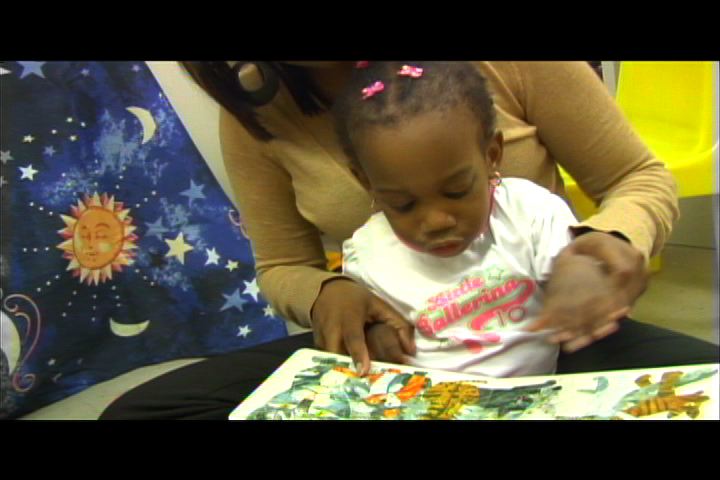
The following clip demonstrates how a therapist uses a variety of strategies, including labelling and hand over hand instruction, to teach Leighdionne, a young girl with autism, basic skills such as pointing and making choices. The therapist also works on expanding her recognition of words. Leighdionne struggles both in identifying the objects ('sun', 'lion') and in following simple instructions (e.g. 'close book').
-
Playing with Toys
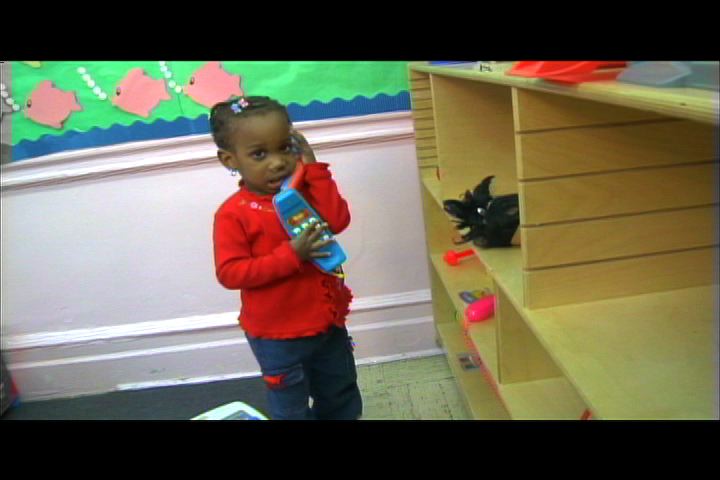
The following clip demonstrates how a young girl with autism plays with toys, both when left to her own devices and when assisted by the therapist. Notably, though, another child is crying throughout the clip and in obvious distress, Leighdionne appears unmoved by this distration, becoming distracted instead by non human stimuli, such as toys, objects and movement around her.
-
Response to Name/ Eye Contact Program
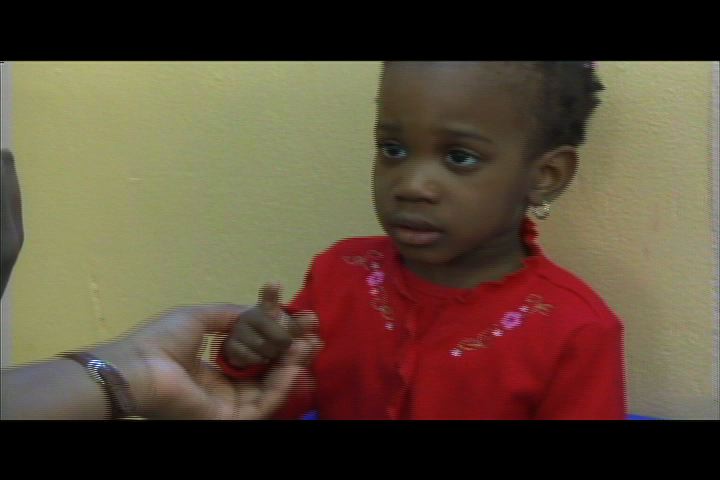
In this clip, Leighdionne is working with her therapist on recogizing and responding to her name. To direct Leighdionne's attention to her face in association with her name, the therapist combines each name call and command with the movement of a finger toy. The therapist repeats this lesson over many trials to help Leighdionne learn.
-
Learning Receptive Language Skills
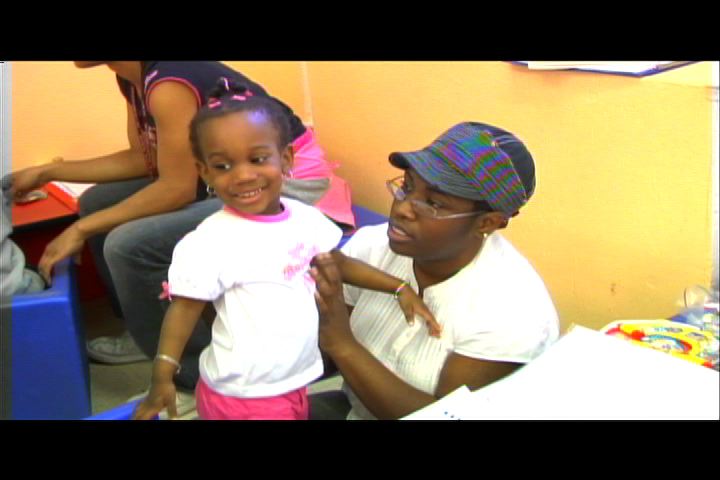
The following clip depicts a behavioral therapy program aimed at improving receptive language skills. In this particular segment, a young girl with autism is being taught to associate the phrase 'stand up' with the action of standing up, a movement that is initially directed by her therapist.
-
Working on Speech and Matching

In the following clip a speech therapist works on expressive and receptive language with Leighdionne, a young girl with ASD. Concurrently, the therapist encourages Leighdionne to make verbal approximations of words, and/or demonstrate an understanding of the words by matching and following simple commands. Leighdionne's need for better communication skills is evident at end the of clip when she becomes upset by the puzzle exercise, but is unable to express why.
-
Working on Expressive Language
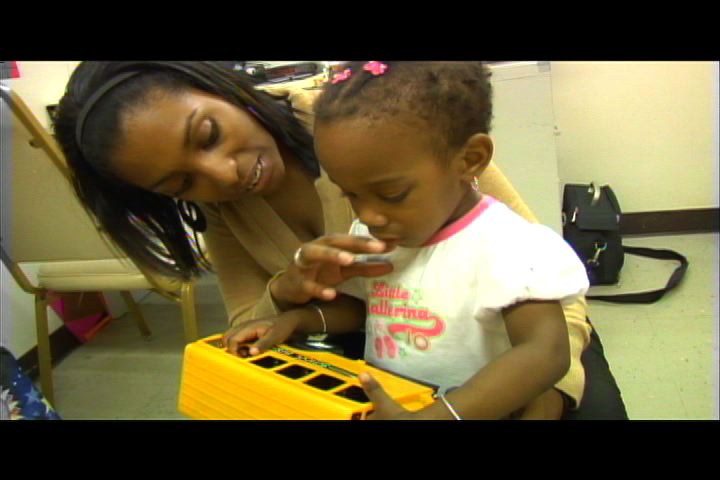
As part of their intervention, speech therapists often provide a narrative and encourage children to use words or word approximations as they progress through their routine activities. In this way, the child learns that words play a meaninful role in their daily lives and functioning.
-
Recognition of Classmates Photos
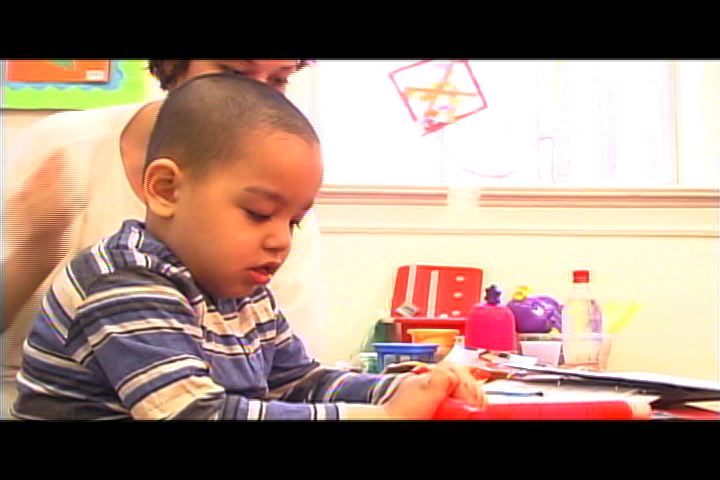
Children on the autism spectrum may often pay minimal attention to and have difficulty recognizing and reading faces. In this clip, a therapist helps Sajid, a young boy with autism, differentiate a picture of his own face from the faces of his classmates.
-
Touching Head and Lack of Eye Contact

In this clip a therapist works on building Sajid's ability to follow a simple command, 'touch your head.' The skill is taught by repeated practice of the command with some support from the therapist (e.g. pushing Sajod's arms upwards), followed by a small reward. Notably, Sajid makes almost no eye contact with his therapist throughout their work together, another warning sign of autism.
-
Learning to Nod 'Yes'
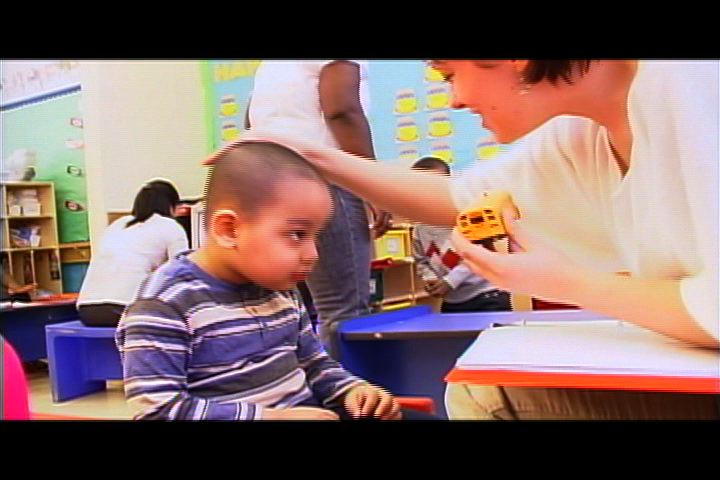
Nonverbal forms of communication such as gesturing or nodding to mean 'yes' are often missing in children at risk for ASD. In this clip, a therapist teaches Sajid, a young boy with autism, to nod his head 'yes' when he wants something.
-
Hand Flapping

Some children with autism display unusual, complicated movements of their hands or whole body, such as tensing their muscles, bouncing, or flapping their arms and hands when they are excited, distressed or seeking sensory input. The following clip shows a child engaging in these movements in different several different settings.
-
Matching Shapes
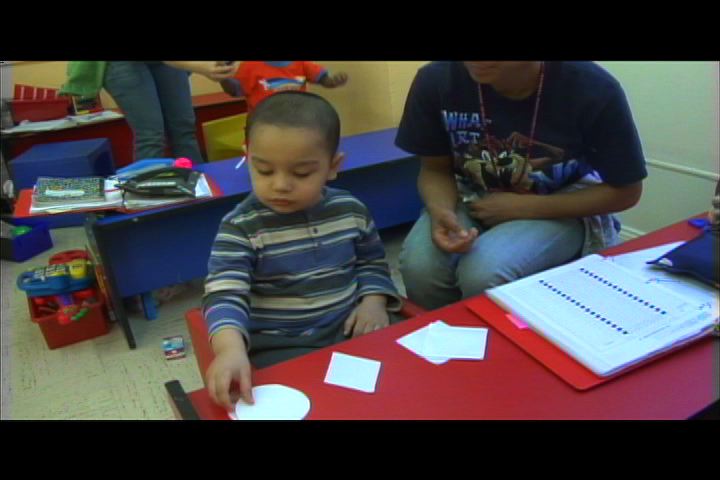
Therapy for children with ASD will often focus on explicity teaching skills learned implicity by typically developing children. In the following clip, Sajid, a young boy with autism, works on learning to recognize and match shapes by repeating this skill with his therapist.
-
Playing with Toys: Emotional Tone

Children at risk for autism may show minimal interest in toys or struggle to play with them in an appropriate manner. In this clip, Sajid requires constant prompting and guidance from his therapist to play appropriately with a variety of toys. Further, he frequently shows absent or odd facial expressions. While manipulating the toys he vacilates between a blank expression and inexplicable laughter, neither of which appear tied to his play.
-
Learning Receptive Language Skills
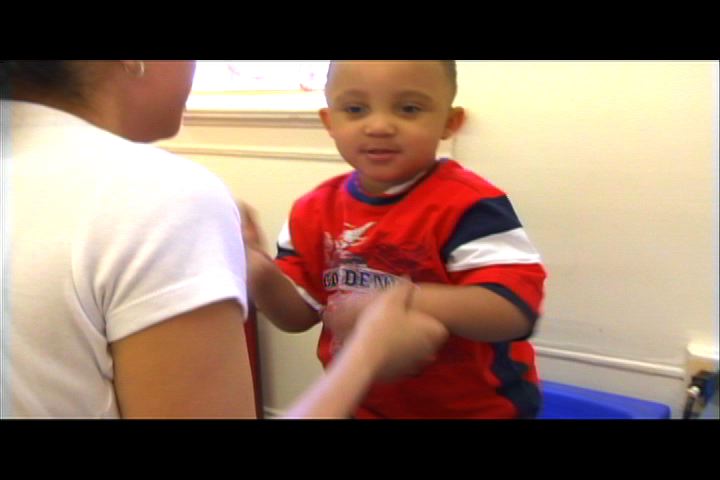
The following clip provides excellent examples of poor eye contact in ASD and therapy for receptive language deficits. To teach Antonio the phrase 'stand up, the therapist repeatedly associates these words with Antonio's movement from a sitting to standing position, often prompting the movement by touching his arms and legs. Antionio appears distracted throughout, making almost no eye contact with his therapist despite her repeated efforts to gain his gaze before giving him instruction.
-
Speech Therapy; Recognition of Objects
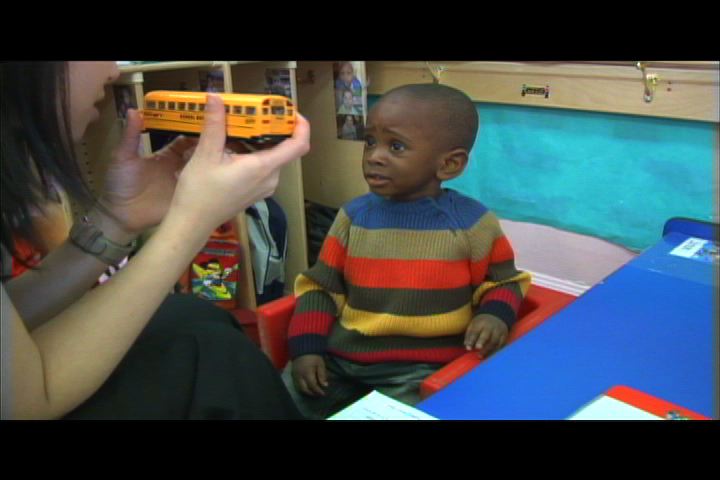
In this clip the therapist works with Jazmere on his expressive language by asking him to correclty label similar objects (e.g. car v. bus) and practice enunciating consonant and vowel combinations. She also requires Jazmere to use appropriate phrases to request his toys and juice.
-
Speech Therapy; Identifying Body Parts
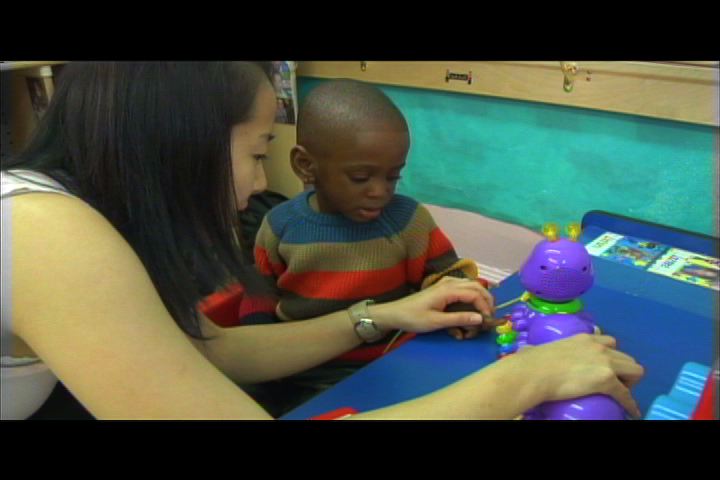
In the following clip, a therapist teaches Jazmere to identify his body parts as part of a speech therapy session. To confirm that Jazmere understands the meanings of these words as well as being able to repeat them, she requires that Jazmere touch each body part as he repeats it.
-
Bringing Items to the Therapist

In the following clip, Quincy, a young boy with ASD, is learning a two step command. He is asked to select the correct object out of a group and give it to the therapist. To learn this skill the therapist gives Quincy the same command for each object, repeating it and guiding him when he responds incorrectly or becomes distracted.
-
Feeding Time at Speech Therapy

Quincy, a young boy with ASD, has an aversion to certain textures and therefore is picky eater. In this clip, a therapist helps Quincy get used to the texture of a cracker by pairing it with one of his preferred foods, yogurt. She also uses their interaction to help Quincy practice using language and eye contact to communicate his wants.
-
Puzzles
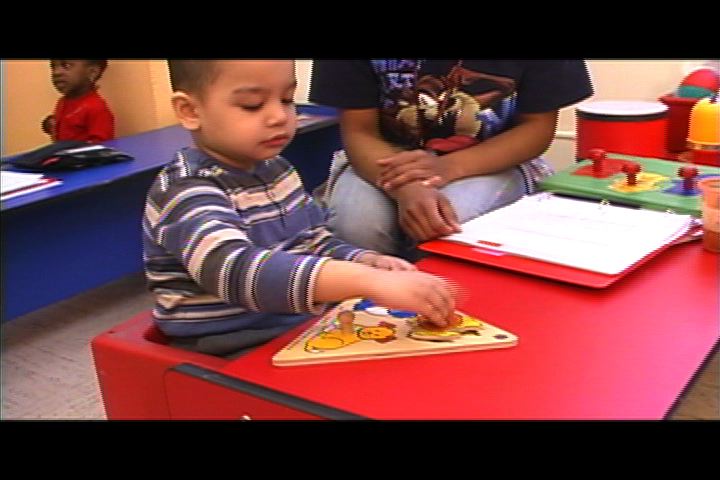
In this clip, Sajid, a student with ASD, is rewarded for correctly completing puzzles. Sajid is good at matching shapes and is able to complete the puzzles the majority of the time with only a little guidance from his therapist.
-
Group Play Time

Many children with autism lack appropriate play skills. In this clip, Sajid, a young boy with autism, needs guidance from a therapist to play with toys and acknowledge his classmates. When left to his own devices, Sajid appears unaware of his classmates and is more interested in repetitively pushing bikes and toy cars, than riding around and playing with his classmates.
-
Working on Eye Contact

In this clip, Sajid is participating in a one to one therapy session aimed at improving his eye contact and response to name. The therapist uses an object Sajid wants to bring his eyes to her face when she calls his name, thus pairing his name with the act of making eye contact. As she repeats the task, Sajid learns the association, looking to her face more immediately and automatically with each trial.
-
ABA Applied Behavioral Analysis

In this clip Thomas Gelb, the Executive Director of the Children's Center, explains what applied behavioral analysis, or ABA, is, and how it is used at the Children's Center to help children on the spectrum build social and daily living skills.
-
Recognition of Classmates Photos
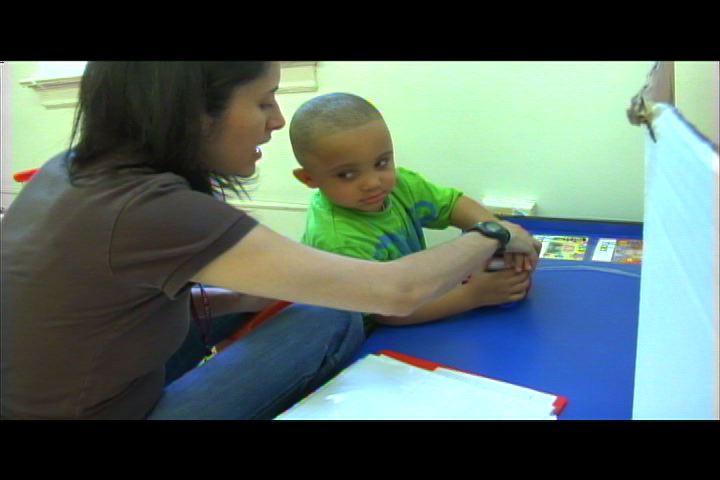
The following clip displays a behavioral therapy session in which Antonio, a child on the autism spectrum, is being to taught to correctly identify a picture of himself. The ability to recognize oneself as well as understanding the larger concept of self versus other, are basic skills often lacking in chidlren with autism.
-
Find the Candy
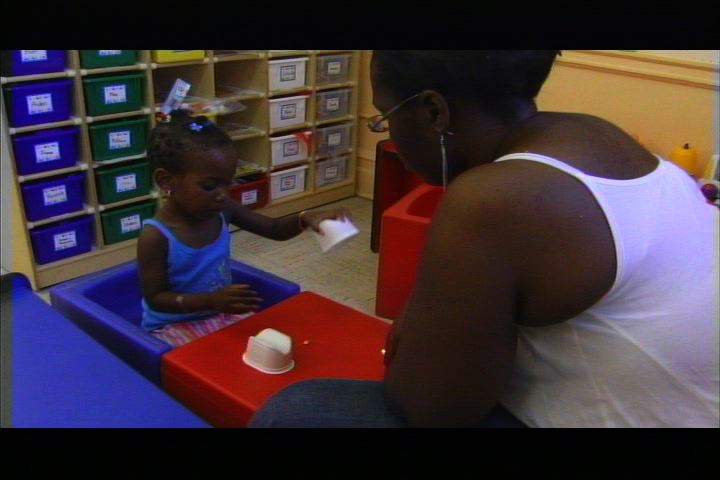
In this clip, a behavioral therapist works with Leighdionne on object permanence, the ability to recognize that an object remains in the world even when the child cannot see it. The therapy session also targets Leighdionne's ability to sustain attention and track objects with her eyes, as she must focus and follow the examiner's movement in order to find her reward, a hidden piece of candy.
-
Imitating Motor Movements

The lack of spontaneous imitation can be an early symptom of autism. In this clip, the therapist teaches Leighdionne this skill by prompting and rewarding her effort to imitate a simple motor movement (patting her lap). In this way therapy explicitly teaches Leighdionne skills that typically developing children typically learn implicity, or without instruction.
-
Matching Objects
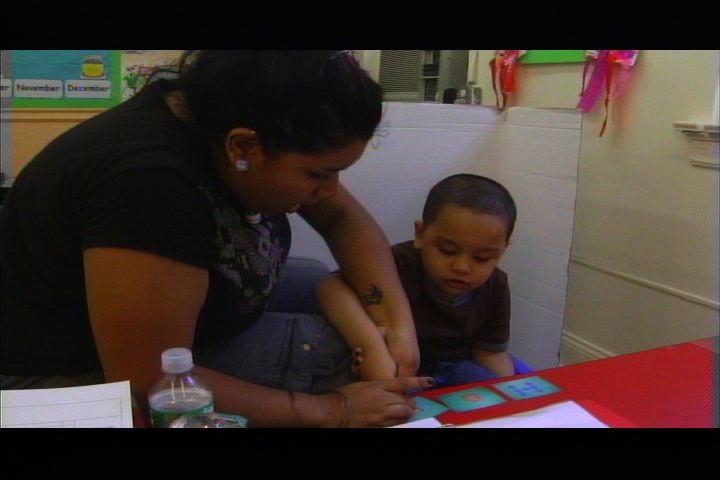
In the following clip, a therapist teaches Sajid how to match various objects to pictures of those objects, a skill that wil be an important building block towards his ability to learn. Autism spectrum disorders pose many challenges to a child's ability to learn. While teaching Sajid to match, his therapist must also routinely re direct his attention, away from the visual and aural sensory stimuli that appeal to him, to the task at hand.
-
Touching Head and Lack of Eye Contact

In the following clip, a therapist teaches Sajid a simple command, "touch head." The lesson demostrates not only Sajid's receptive language delays, but also his poor eye contact and lack of facial expressions, all symptoms of ASD.
-
Working on Eye Contact and Speech
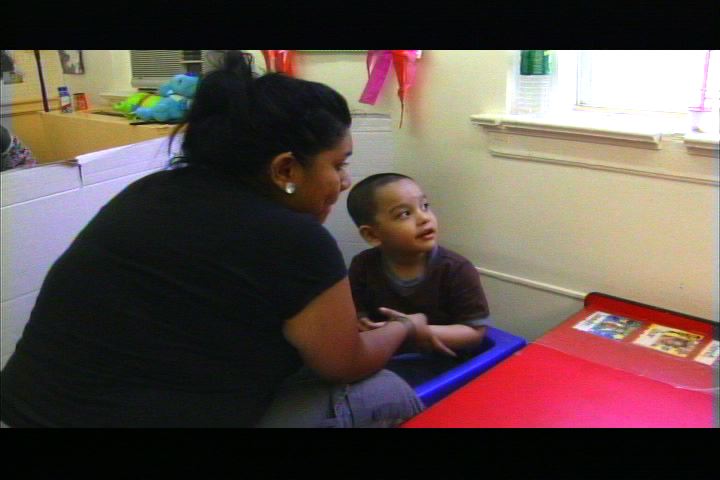
In the following clip, a therapist teaches Sajid both verbal and nonverbal communication skills. She focuses first on helping Sajid establish eye contact and then encourages him to pair this nonverbal skill with vocalization. Learning to coordinate these skills is an important initial step to developing his effective use of language.
-
Bringing Items to the Therapist
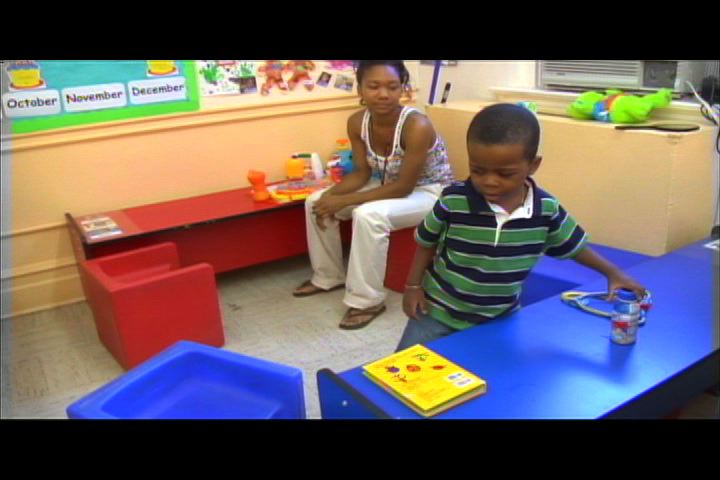
In the following clip, Quincy demonstrates gains in his receptive language skills by consistently, but also flexibly retrieving a variety of objects according to the therapist's command: "Go get the...and give it to me." He also demonstrates an ability to express his needs by consistently pointing and/or requesting the preferred reward after each task.
-
Making Progress in Therapy: a Comparison
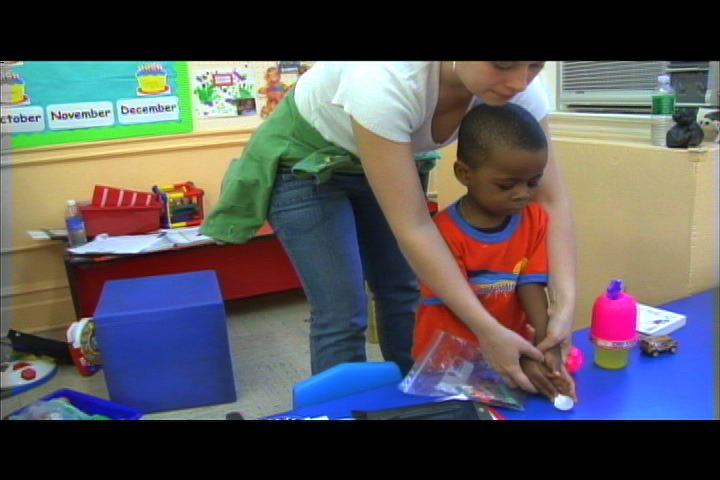
The following clip demonstrates the clear progress in receptive language skills made by a young child with ASD over the course of just a few months in an intensive ABA school program.
-
Recognition of Animals
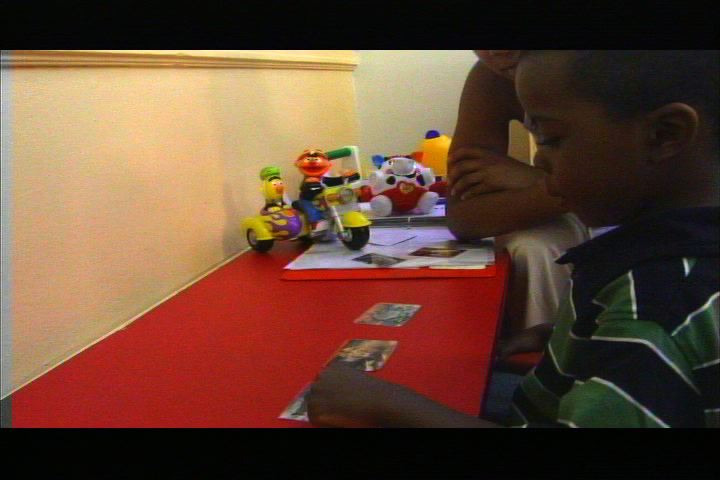
In this clip Quincy's receptive vocabulary of animals is tested. Quincy demonstrates his understanding for these words by successfully picking out a variety of animals without any contextual (i.e. a familiar routine) or nonverbal cues, such as gestures, from his therapist. He also successfully requests a reward after each task by pointing to his preferred toy.
-
Recognition of Family Photos
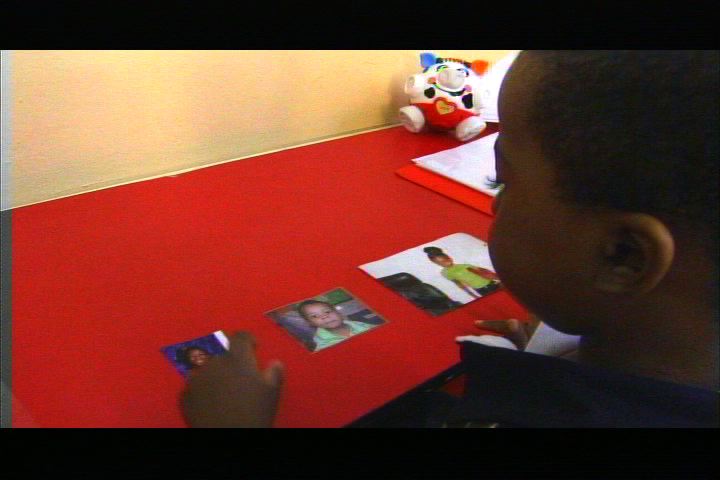
Quincy demonstrates mastery of two new skills. With examples of his developing receptive language and facial recognition skills, he displays an ability to identify familiar people by both their names and faces.
-
Christian K's Physical Therapy Session with Kim Keane
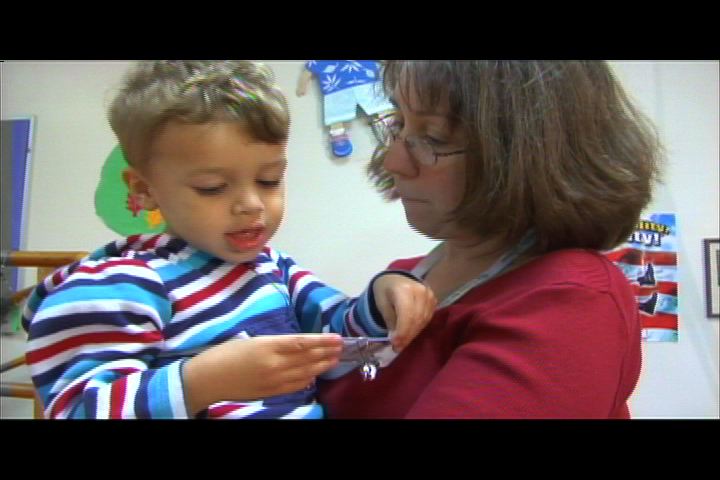
At the Cloverpatch School, Christian K, who has autism, is filmed in his one on one physical therapy session with Kim Keane. Ms. Keane discusses Christian's sensory needs, motor difficulties, such as walking up and down steps, and how she regularing consults with Christian's other therapists and his parents; to better communicate with and motivate Christian during their sessions as well as incorporate speech therapy into their work.
-
Pretend Play at Speech Therapy

In this video the speech therapist is playing house with Leighdionne. She uses the pretend game to not only teach and encourage her to speak certain words, but also to engage in and understand appropriate pretend play.
-
The Children's Center, A School for Early Intervention
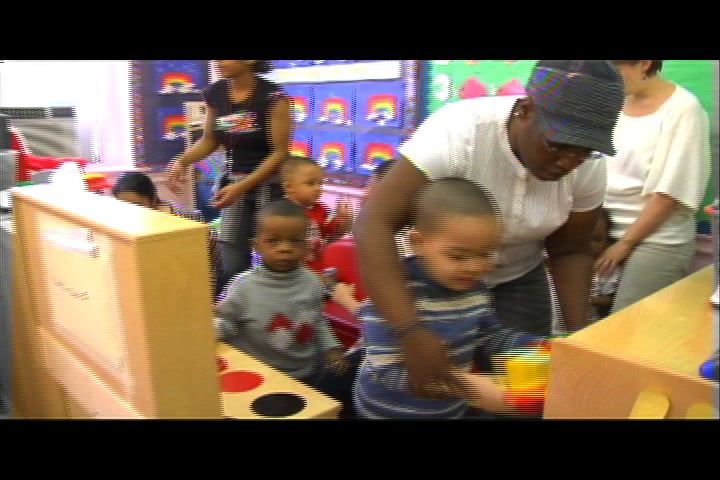
This documentary is an in depth look at an early intervention school. It follows Sandy, a special instructor at the children's center, as she explains how she works with kids on the spectrum, the different programs she implements in the classroom and the importance of therapy such as this for children on the spectrum who are under three. The Children's Center for Early Learning (CCEL) was established in 1996 in Brooklyn, New York to provide educational and therapeutic services to children with developmental delays. Their program annually serves approximately 150 children aged three to five years in the school setting. Additionally, each year it conducts between 100 200 multi disciplinary evaluations of children who are referred by multipl...
-
Teaching Lucas Eye Contact 1

Lucas, a young boy on the autism spectrum, does not consistently make eye contact with others, an early warning sign. Therapist Georgia tries repeatedly to gain and maintain Lucas' eye contact during a therapy session. Despite her numerous physical and verbal attempts to catch his eye, Lucas spends most of the session turned away from her.
-
Teaching Lucas Expressive Language

Though Lucas' initial reaction is simply to scream and cry when he wants a toy car, his therapist, Georgia, teaches him to use his words and request: "Give me car."
-
Teaching Lucas Receptive Language
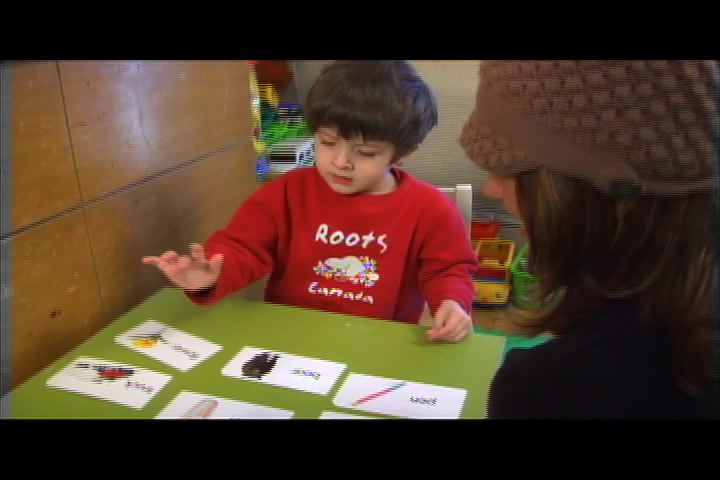
Therapist Georgia practices receptive language skills with Lucas by asking him to point to pictures of words he recognizes. Lucas does a great job, so Georgia reinforces his behavior by giving him a toy car.
-
Lucas Eye Contact (Reading Book Compare)

To help grab Lucas's attention, Georgia reads Lucas a homemade storybook, where pictures of Lucas and his home have been used as the illustrations. She uses this story book to prepare and help Lucas understand the process of getting a haircut. Despite her efforts, Lucas does not fully engage in the activity or even seem to recognize himself in the pictures.
-
A Spontaneous Sentence
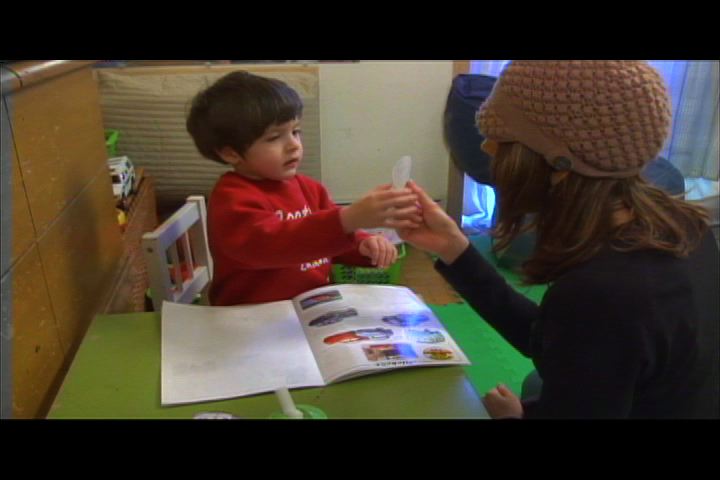
Lucas demonstrates the progress he has made by directing a spontaneous request "take out the sticker." to his therapist, Georgia. Rather than echoing Georgia's words or simply crying, Lucas is finally able to ask for what he wants.
-
Teaching Lucas Emotions

Though Lucas seems more interested in this picture book, he does not look back at his therapist Georgia as many typically developing children might. He does not seem to be interested in her reactions to the book or in sharing his enjoyment. Further, Lucas shows great difficulty in imitating and understanding the emotions Georgia demonstrates for him. He repeats "I'm angry." and smiles.
-
Teaching Lucas Imitation

Though many typically developing children begin to imitate others on their own and use this skill to learn nonverbal communication, children with ASD often must be explicitly taught how to imitate.
-
Nathan to Give Flash Cards to Mommy
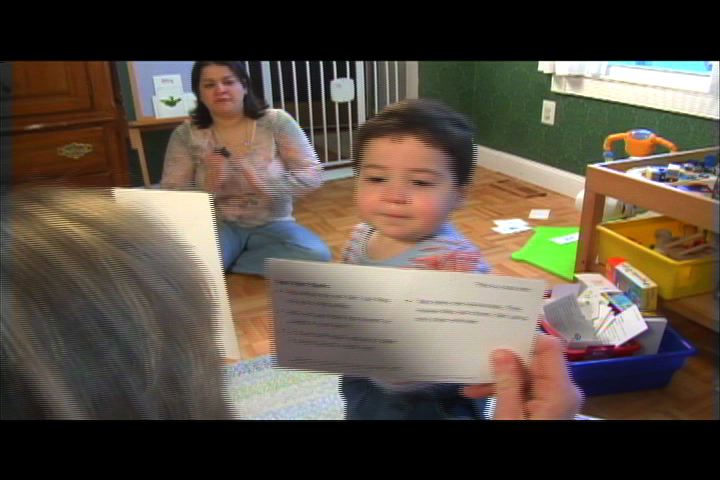
Nathan works with his therapist to build his receptive language skills. While Nathan is often able to identify the correct picture, he is unable to follow the one step command: "give it to Mommy." To help Nathan learn this command, the therapist and Nathan's mother both request and walk him through giving each picture card to Mom.
-
Interview with Nathan's Teacher

Erin Klepp, Nathan's teacher (therapist) talks about how Nathan's therapy targets symptoms of ASD and discusses the progress he is making in various areas.
-
Therapy Works

The mother of Gabriel, Nathan and Ben talks about how therapy for children with ASD has changed for the better in recent years and proved very beneficial to her children.
-
Lucas' Fear of Getting a Haircut

Therapists will sometimes use a social story, that is, a personalized book describing each step of an event, to help children with autism face their fears or adjust to new experiences. Georgia uses a social story depicting Lucas' first hair cut to help him adjust to his next haircut more easily.
-
Teaching Christian Receptive Language
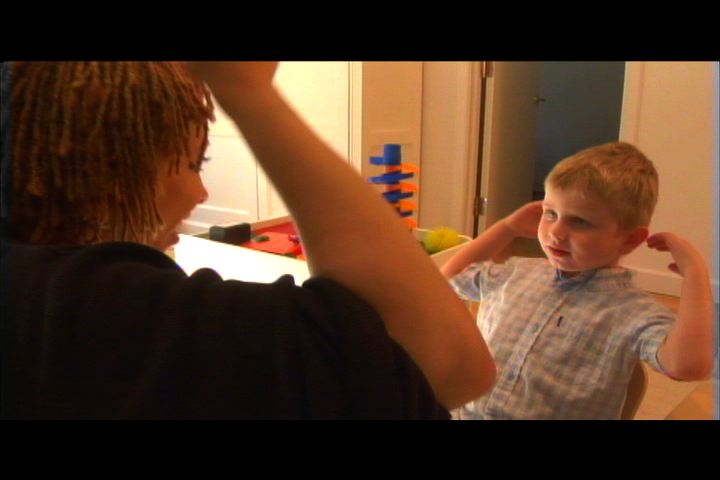
Christian's therapist Tia helps him improve his receptive language skills by working on a simple, one step command: "Give me." They later practice imitation together. While typically developing children learn these skills on their own, many children with autism must be taught them. Throughout the video Christian engages in many distracting sensory seeking behaviors, including grinding his teeth, chewing on toys, looking at his fingers and making high pitched sounds.
-
"Wells...wouldn't stop when they called him."

Children at risk for autism may not consistently respond to their name or check back with their parents. Georgia, Wells' therapist, describes how she taught Wells to not only stop, but to return to his parents when they called him. She did this by breaking down the various components of this command and practicing it in different situations and with other people.
-
Opening His Eyes to the World A Story of a Boy and Autism (Part 1)

This is the first section of the documentary "Opening his Eyes to the World," which follows the birth, development and treatment of a young child with autism spectrum disorder. In this prologue, Wells' parents comment on home video of the first year of Wells' life, in which he appeared more verbal and connected than he would in the years following.
-
Josiah's Progress

The following video demonstrates the progress of Josiah, a young boy with autism, over the course of 8 months of intensive applied behavioral analysis at the Children's Center in Brooklyn, NY. Videos taken throughout the year illustrate how Josiah gradually learns a variety of essential skills, such as waving goodbye, nodding his head, imitating, following commands and pointing. This history of Josiah's progress attests to the great promise of early intervention for children on the autism spectrum.
-
Teaching Children on the Autism Spectrum
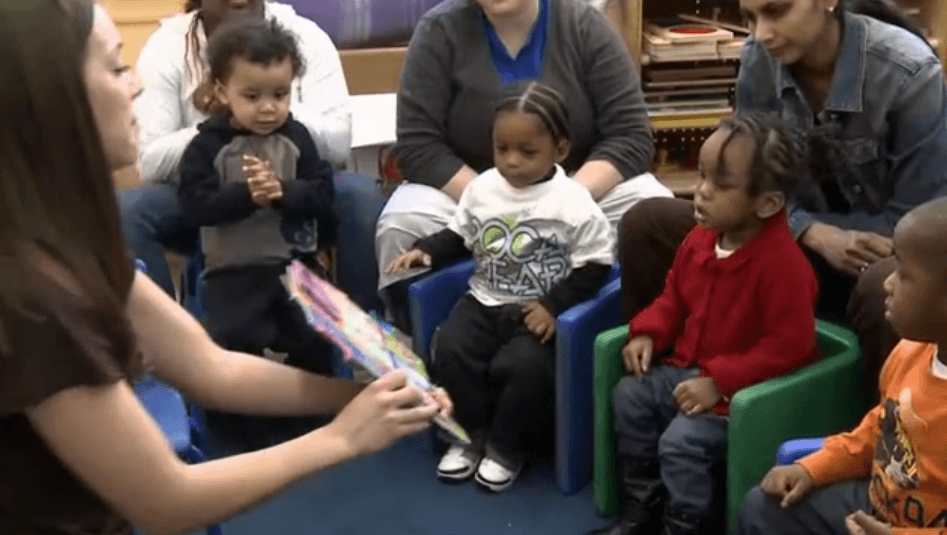
Kimberly Heinemann, a head teacher at the Children's Center, describes the unique challenges and rewards of teaching children on the autism spectrum. Whereas typically developing children will intuitively learn from their environment and people around them, children on the autism spectrum must be explicitly taught skills, such as pointing, requesting and imitation. Ms. Heineman describes the range of teaching strategies used in her classroom, including applied behavioral analysis, hand over hand, fading prompts, family work and lots of positive social reinforcement.
-
What is ABA Therapy
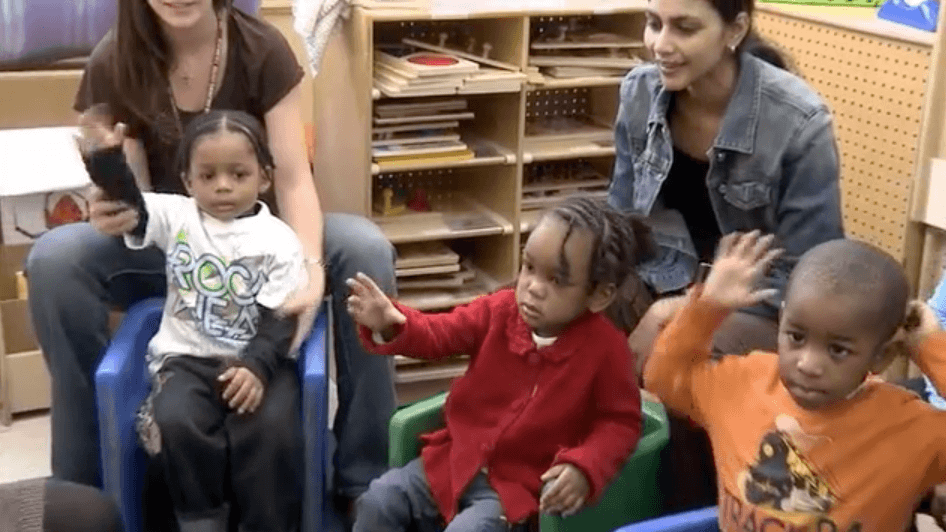
Dr. Fein describes the principles of applied behavior analysis (ABA), an empirically supported intervention for children with ASD. To illustrate, ABA therapy sessions are shown.
-
Reinforcements in Therapy
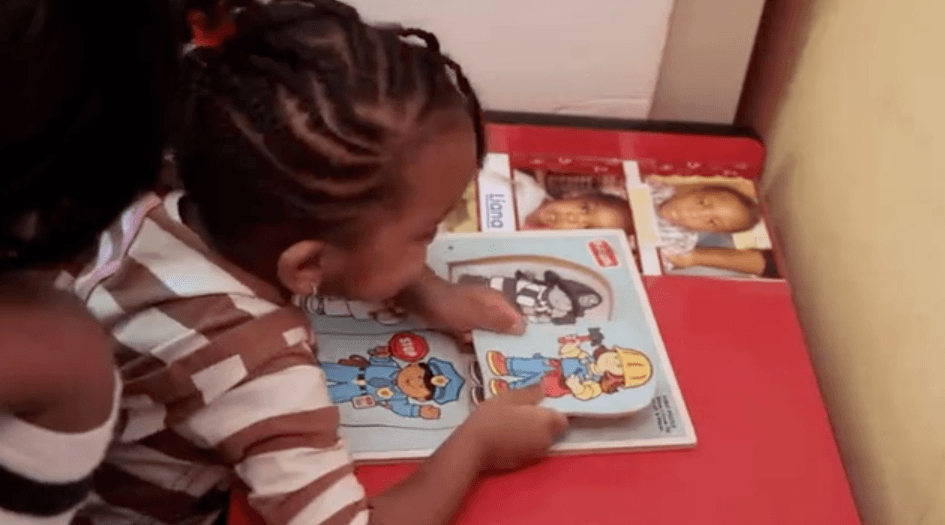
Dr. Fein describes the importance of understanding patterns of reward and reinforcement when working with a child with ASD. Rewarding appropriate behaviors, while reducing the reward of some inappropraite behaviors, such as stereotypies, is a central principle of Applied Behavior Analysis, an empirically supported treatment for ASD.
-
Restricted and Sensory Insterests Therapy: Using Paper and Paste

Two children with ASD work with their therapists on a crafts project. The project (making cards) allows them to practice fine motor skills, sustained attention and also gluing, drawing, holding, patting and cleaning. The act of making a card is broken down into a series of small steps in order to help the children successfully learn the routine of card making. Learning this routine will allow them to recreate the activity on their own in the future. It is also notable that Josiah, the young boy on the right, is distracted from the activity by his repetitive vocalizations, a symptom of ASD. Rather than being directed at others or communicative, Josiah's repetitive vocalizing appears to be nonfunctional and likely related to the sensory stimu...
-
Restricted and Sensory Insterests Therapy: Making and Eating Jello Hearts

Children at an early intervention center learn how to make jello hearts with heart shaped molds. This type of activity allows children to explore sensory experiences such as touch and taste.
-
Motor Stereotypies Therapy: Redirecting Stimming

Georgia, a therapist, is shown working with Wells helping him to focus his energies on appropriate play and re directing his sensory seeking efforts, such as his interest in spinning the wheels on toy cars.
-
Motor Stereotypies Therapy: Correcting Repetitive Stereotyped Behaviors
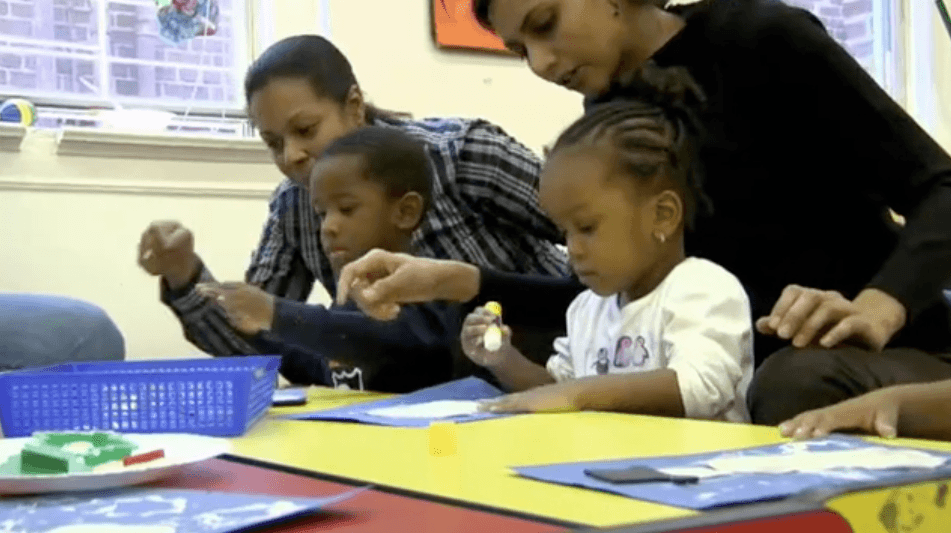
A child with ASD repetitively peers through the corners of her eyes at different stimuli around the room, a sensory related symptom of ASD. To correct this behavior, her therapist repeatedly breaks her gaze and redirects her to the task at hand.
-
Promoting Interest in Other Children: Playing on a See Saw
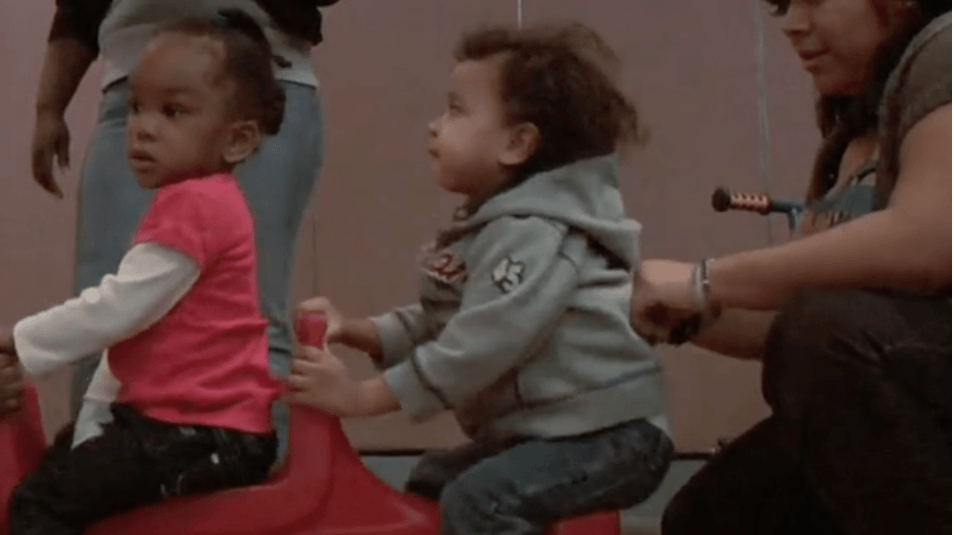
Therapists teach a group of children with ASD appropriate play skills to both promote their interest and their ability to succeed in a social interaction with a peer.
-
Promoting Interest in Other Children: Rhythm Sticks Play
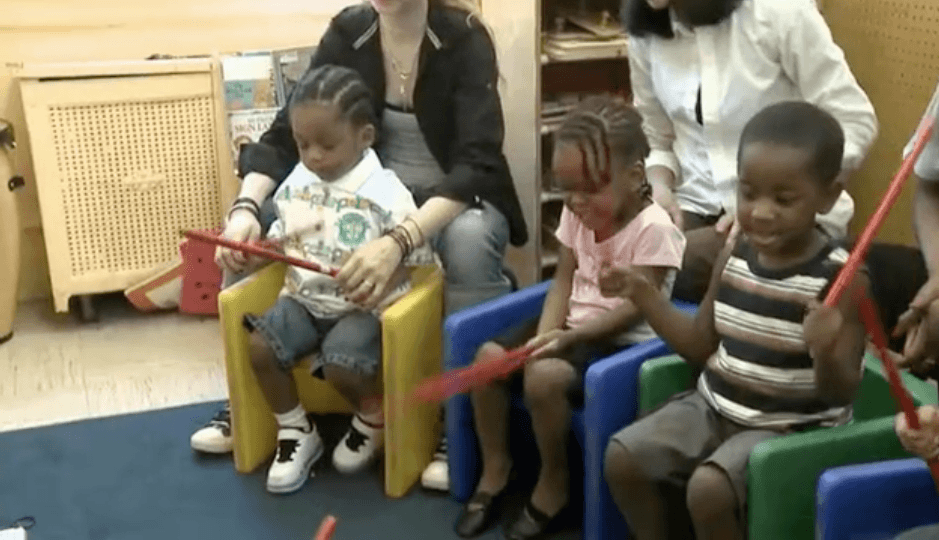
Teaching moments are maximized in a special education classroom. Specifically, the children learn to work together and follow a social pattern as a part of a musical game. In addition, a young boy with ASD practices interacting with his classmates and learns how to appropriately request from his peers.
-
Promoting Interest in Other Children: Going Through a Tunnel
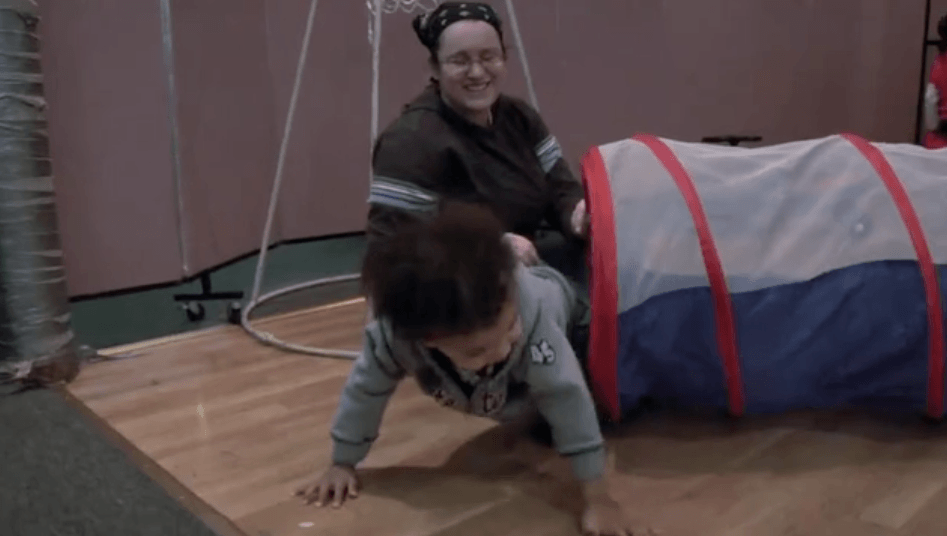
Therapists teach a group of children with ASD appropriate play skills, such as turn taking, while also promoting their social interest. These skiils are important building blocks for cooperative play and social development.


































































